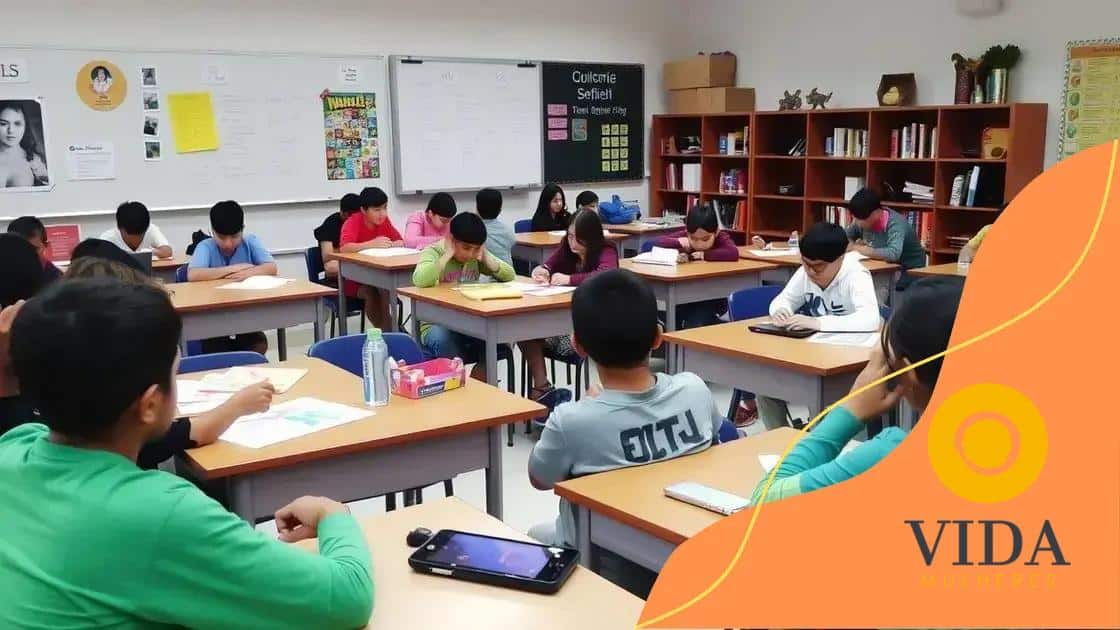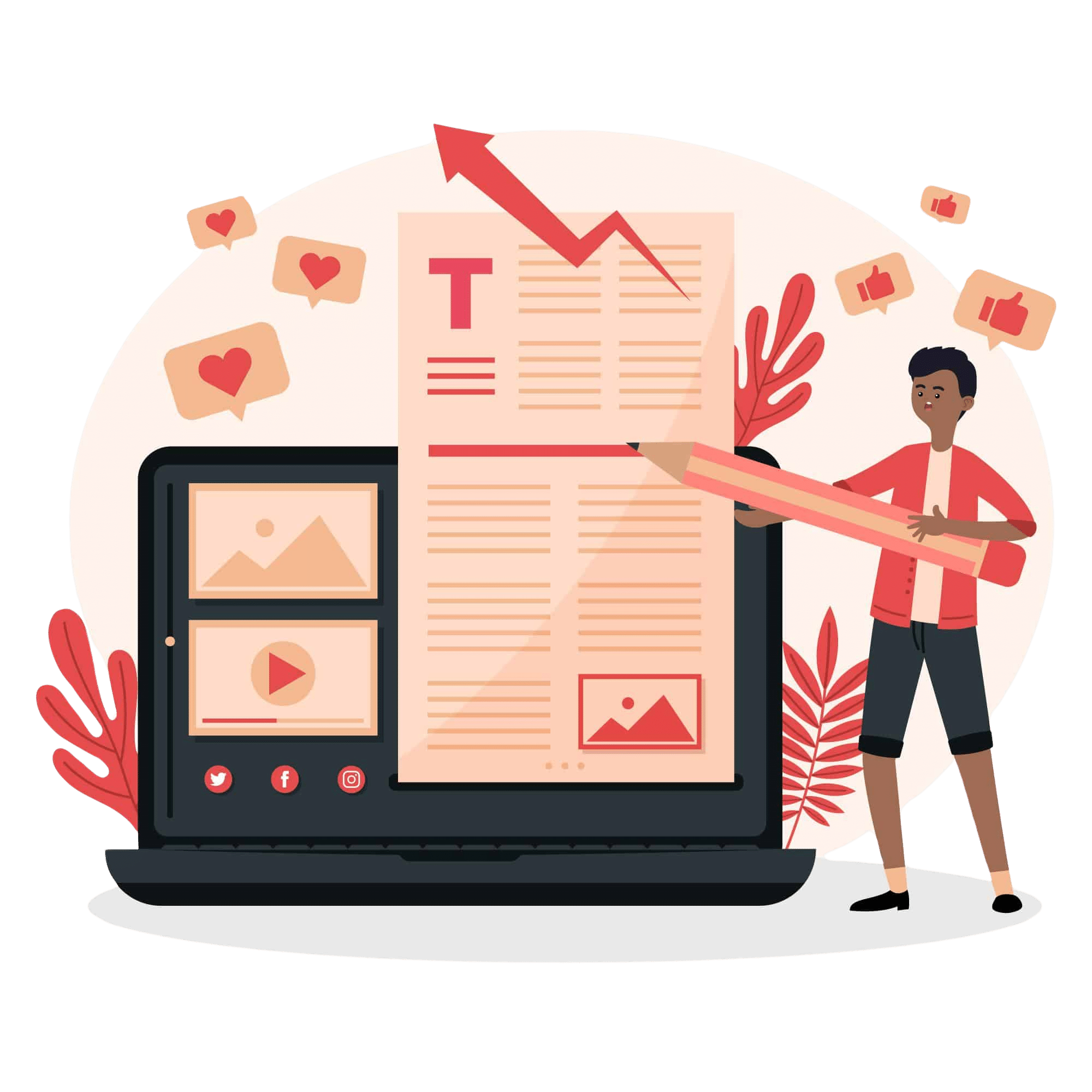Tech addiction prompts push for digital detox curriculum

Tech addiction prompts the need for digital detox curriculums that help individuals balance technology use and enhance mental well-being through structured offline activities and mindful practices.
Tech addiction prompts an important conversation about our daily habits and mental well-being.
Have you ever felt overwhelmed by constant notifications? This article explores how digital detox curriculums can help restore balance in our lives.
Understanding tech addiction
Understanding tech addiction is crucial in today’s digital world. Many people find themselves spending hours on their devices, often without realizing how it affects their lives.
This section explores the signs and impacts of tech addiction, shedding light on why it’s essential to address this issue.
Signs of Tech Addiction
Identifying tech addiction can be the first step towards managing it. Here are some common signs to look for:
- Excessive time spent on devices, often at the cost of in-person interactions.
- Experiencing anxiety or irritability when unable to access technology.
- Using technology as a way to escape from real-life problems.
- Neglecting responsibilities like work or school due to device usage.
Understanding these signs is important as they indicate a possible underlying problem. Individuals may not be aware of how their habits have shifted.
Tech addiction can lead to significant challenges in personal relationships and mental health.
Impacts of Tech Addiction
The effects of tech addiction are both physical and emotional. Many people experience a decrease in face-to-face communication skills. Additionally, it can contribute to feelings of loneliness and depression, despite being connected online.
Moreover, excessive screen time can lead to physical problems such as eye strain and disrupted sleep patterns.
It’s also common for individuals to prioritize screen time over physical activities, leading to a more sedentary lifestyle. Addressing these impacts requires a balance between online and offline interactions.
Ultimately, understanding tech addiction is about recognizing its symptoms and impacts. Once awareness is established, individuals can seek help and begin the journey toward a healthier relationship with technology.
The rise of digital detox programs
The rise of digital detox programs reflects a growing awareness of the negative effects of technology on our lives.
As people become more reliant on devices, many are seeking ways to reconnect with the real world, leading to an increase in these programs.
What is a Digital Detox?
A digital detox is a period during which a person refrains from using tech devices, such as smartphones, computers, and tablets.
The goal of this break is to reduce stress, increase mindfulness, and promote better mental health. By stepping away from screens, individuals can better engage with their surroundings and improve personal relationships.
Increasingly, people are recognizing the need for digital detox programs to combat the overwhelming nature of constant connectivity.
Many programs offer structured experiences designed to help participants unplug and reflect on their tech habits.
Benefits of Digital Detox Programs
- Improved Mental Health: Taking time away from screens can lead to lower anxiety and improved mood.
- Better Sleep: Reducing screen time helps improve sleep quality by minimizing blue light exposure before bed.
- Enhanced Focus: Participants often notice improved focus and productivity after a detox, as distractions are minimized.
- Stronger Relationships: Engaging more in person can help build and strengthen bonds with family and friends.
With the increasing popularity of digital detox programs, various options are available, from weekend retreats to month-long challenges. These programs often include activities such as meditation, yoga, and nature hikes, encouraging participants to find joy in offline experiences.
Not every digital detox needs to be a formal program. Simple practices, such as designating tech-free hours or zones in the home, can be effective as well.
Adopting these habits can help individuals strike a better balance between technology use and real-world interactions.
Benefits of incorporating digital detox in schools
The benefits of incorporating digital detox in schools are becoming increasingly clear. As technology continues to dominate students’ lives, finding balance has never been more important. Implementing digital detox initiatives can play a key role in fostering healthier habits among students.
Improved Focus and Attention
When students engage in digital detox activities, they can experience a boost in focus and attention.
With fewer distractions from screens, learners can better absorb information and contribute to classroom discussions. This leads to a more productive learning environment.
- Enhanced memory retention: Students are better able to remember what they learn when they reduce screen time during lessons.
- Increased participation: Less reliance on devices encourages students to engage actively with their peers and instructors.
- Greater creativity: A break from technology opens up space for creative thinking and problem-solving.
Integrating digital detox days or weeks in school curriculums provides students with the chance to unplug and reset.
By rediscovering offline activities, students can form new interests and strengthen social connections. This is essential as social skills are often overlooked in a tech-saturated environment.
Enhanced Mental Well-being
Incorporating digital detox programs can significantly enhance students’ mental well-being. With rising levels of anxiety and depression linked to excessive technology use, schools have a responsibility to prioritize student health.
Engaging in activities free from screens, such as outdoor sports or arts and crafts, helps students recharge mentally.
Furthermore, students learn to manage their time better. They can allocate specific periods for technology while enjoying the benefits of offline activities.
By understanding the importance of balance, they will be more equipped to handle real-world situations, both now and in the future.
Ultimately, incorporating digital detox in schools promotes not only academic success but also personal growth. As schools recognize the importance of these initiatives, students can thrive both in and out of the classroom.
What a digital detox curriculum looks like

A digital detox curriculum is designed to help students navigate their tech use in a healthier way. By integrating fun, engaging activities, schools can foster mindful habits among students while encouraging them to unplug regularly.
Key Components of a Digital Detox Curriculum
The curriculum typically includes various topics that promote offline learning and experiences. Here are some of the key components:
- Mindfulness Training: This helps students become aware of their tech habits and the effects of overstimulation.
- Outdoor Activities: Incorporating outdoor time encourages physical health and interaction with nature.
- Creative Arts: Activities like painting, writing, or crafting allow students to express themselves without screens.
- Group Discussions: These foster conversations about technology’s impact on life, allowing students to share their experiences.
These components work together to create a holistic approach to reducing screen time. A successful digital detox curriculum helps students understand the value of offline experiences, encouraging personal growth and social skills.
Implementation Strategies
Having a plan is essential for a successful digital detox. Schools might organize specific days for students to engage in offline activities, creating a structured environment that prioritizes time away from screens.
Teachers can incorporate lessons on tech balance in their daily routines, seamlessly blending detox practices into the curriculum.
For instance, schools can allocate a specific period each week where students participate in tech-free activities.
This can range from sports to board games or group projects that require collaboration. With proper planning, the entire school community can embrace the digital detox concept.
Ultimately, a well-structured digital detox curriculum not only benefits students academically but also supports their social and emotional development.
As learners gain awareness, they are more likely to develop sustainable habits that extend beyond the classroom.
Tips to promote a balanced digital life
Promoting a balanced digital life is essential in today’s technology-driven world. Finding ways to strike a healthy balance can help prevent tech addiction and support overall well-being. Here are some effective tips to help individuals manage their screen time and cultivate healthier habits.
Set Screen Time Limits
Establishing personal screen time limits can make a significant difference. It allows individuals to become more aware of their usage.
Start by determining how much time you spend on devices today. Set realistic goals, such as limiting daily social media usage to one hour or designating tech-free zones at home.
- Use apps: Many apps help track and limit screen time effectively.
- Create a schedule: Designate specific times for using devices, such as one hour in the evening.
- Engage in outdoor activities: Replace certain screen times with physical activity or hobbies that do not involve technology.
These simple adjustments can lead to a healthier relationship with technology.
Practice Mindfulness
Mindfulness plays a key role in achieving a balanced digital life. Practicing mindfulness can help individuals become more aware of their habits and feelings.
For example, consider implementing a daily mindfulness or meditation practice. This can involve taking a few minutes each day to sit quietly, focusing on the breath, and noticing any urges to reach for a device.
By incorporating mindfulness, individuals can develop a deeper understanding of their digital habits and make choices that promote balance.
Taking a step back from technology allows for reflection on its impact on daily life.
A balanced digital life also includes fostering offline connections. Make a habit of spending quality time with family and friends without devices.
Organizing tech-free gatherings or activities can strengthen relationships and reinforce the importance of real-life interactions.
In summary, promoting a balanced digital life involves practical strategies that encourage mindful technology use while embracing offline experiences.
Learning to set limits and incorporate mindfulness practices can empower individuals to lead healthier, more fulfilling lives.
In conclusion, fostering a balanced digital life is essential for individuals of all ages, especially students.
By implementing thoughtful strategies such as setting screen time limits, practicing mindfulness, and prioritizing offline interactions, we can reduce the negative effects of technology. These efforts not only promote better mental health but also enrich our relationships and improve overall well-being.
Embracing these tips will help cultivate respect for both digital and real-world experiences, leading us toward a healthier lifestyle.
FAQ – Frequently Asked Questions about Digital Detox
What is a digital detox?
A digital detox is a period when an individual refrains from using tech devices to reduce stress and reconnect with the real world.
How can a digital detox benefit students?
A digital detox can improve students’ focus, reduce anxiety, and enhance their social interactions by encouraging offline activities.
What are some simple tips for promoting a balanced digital life?
Some tips include setting screen time limits, practicing mindfulness, and engaging more in outdoor activities.
Can schools implement digital detox programs?
Yes, schools can incorporate digital detox programs through tech-free days, outdoor activities, and mindfulness practices to foster healthier habits.






